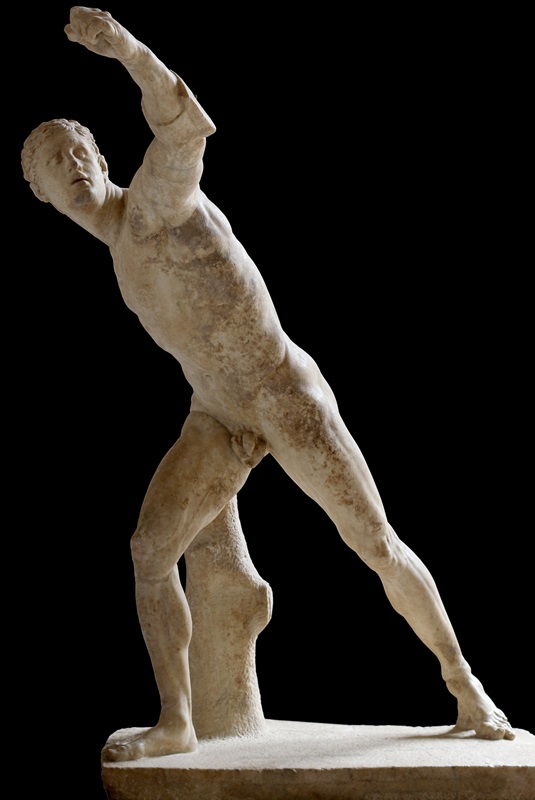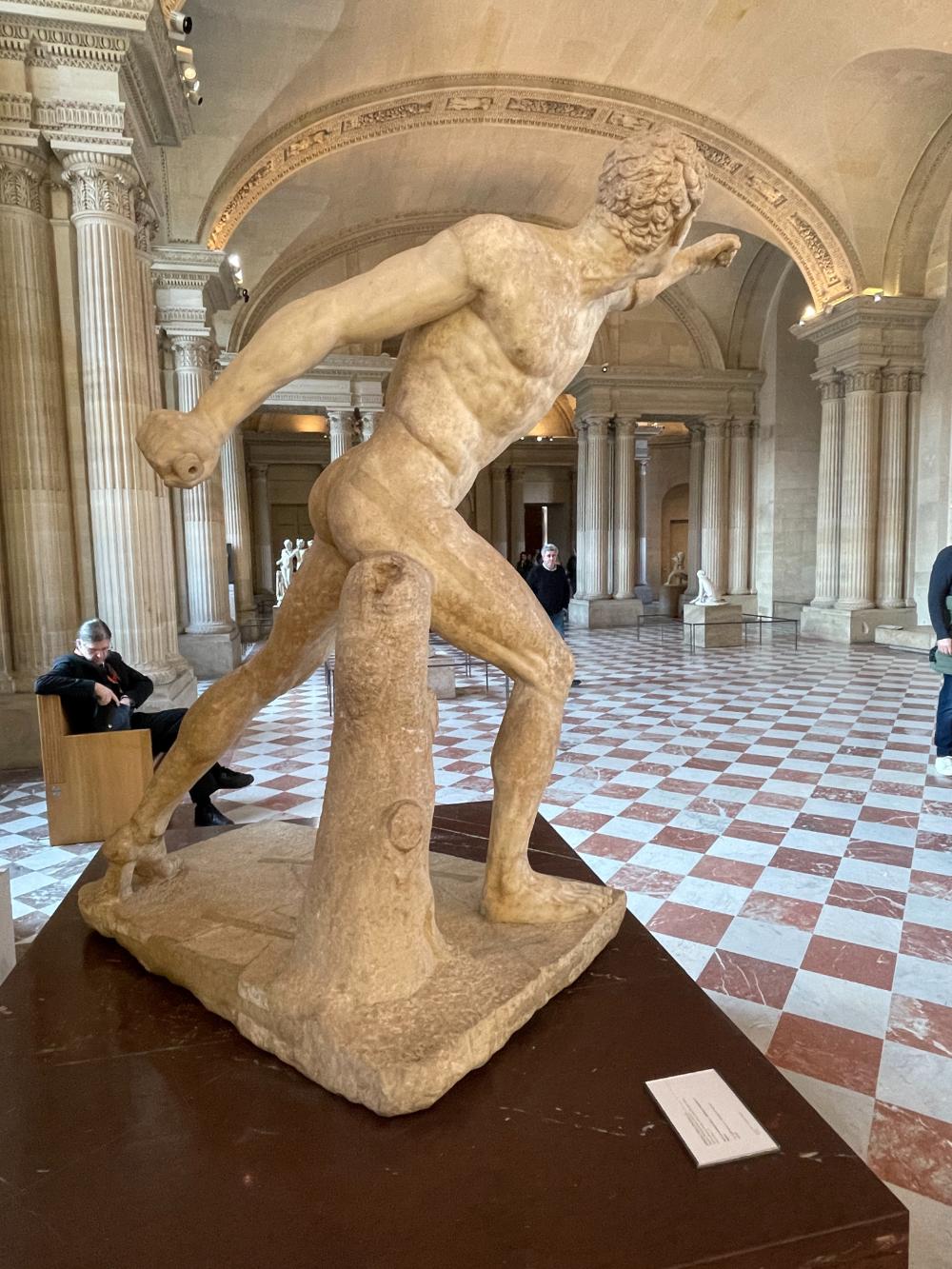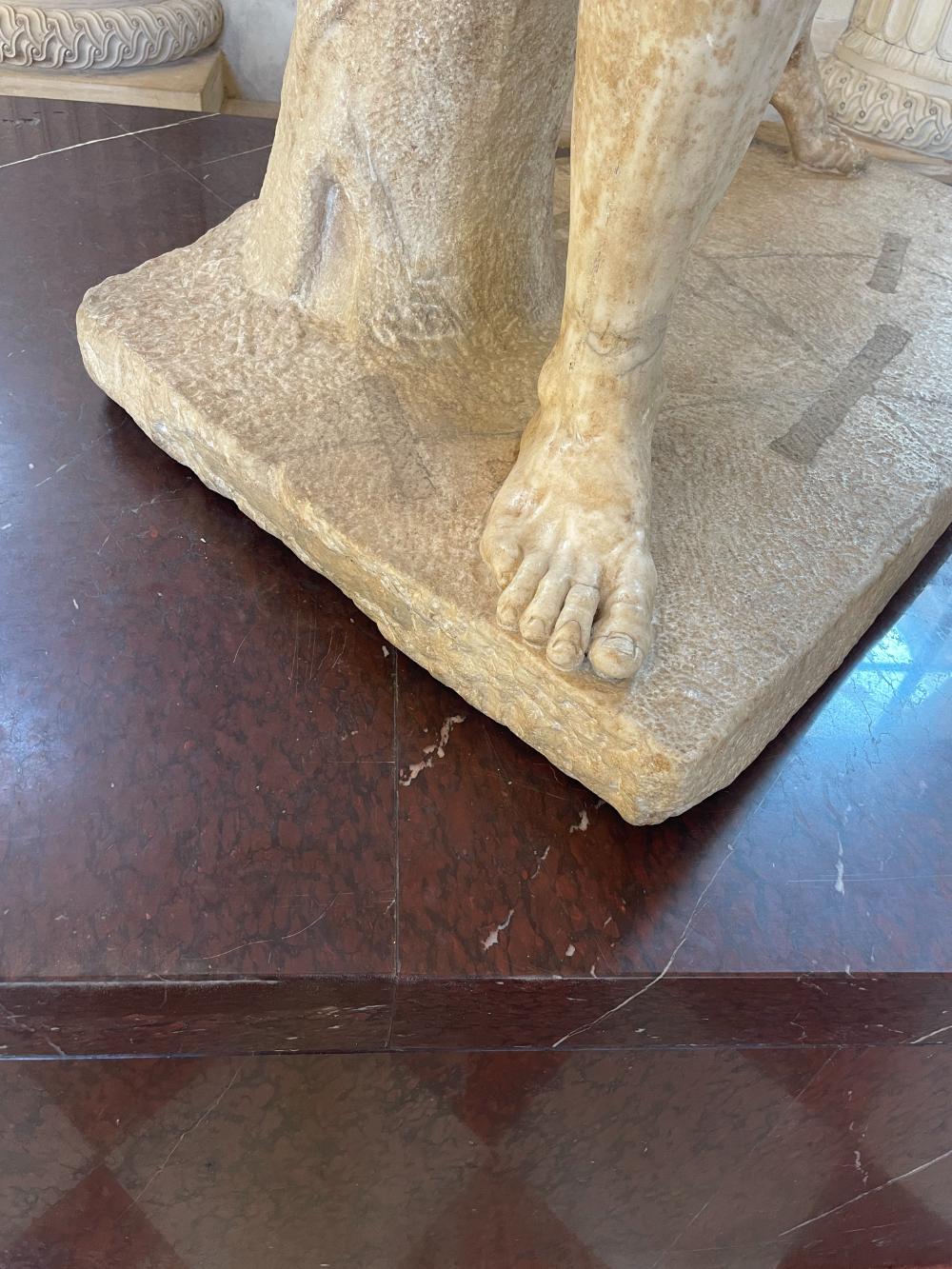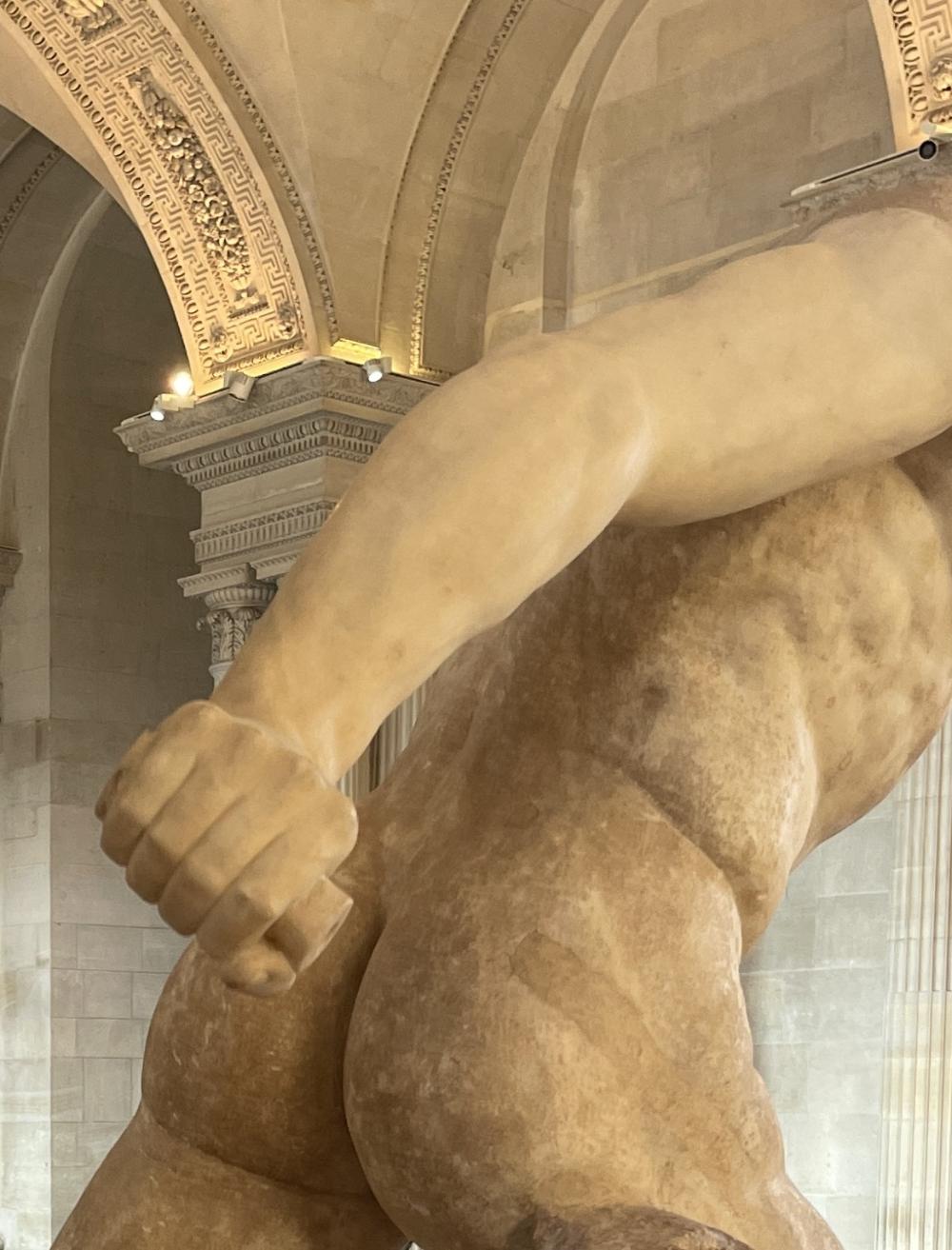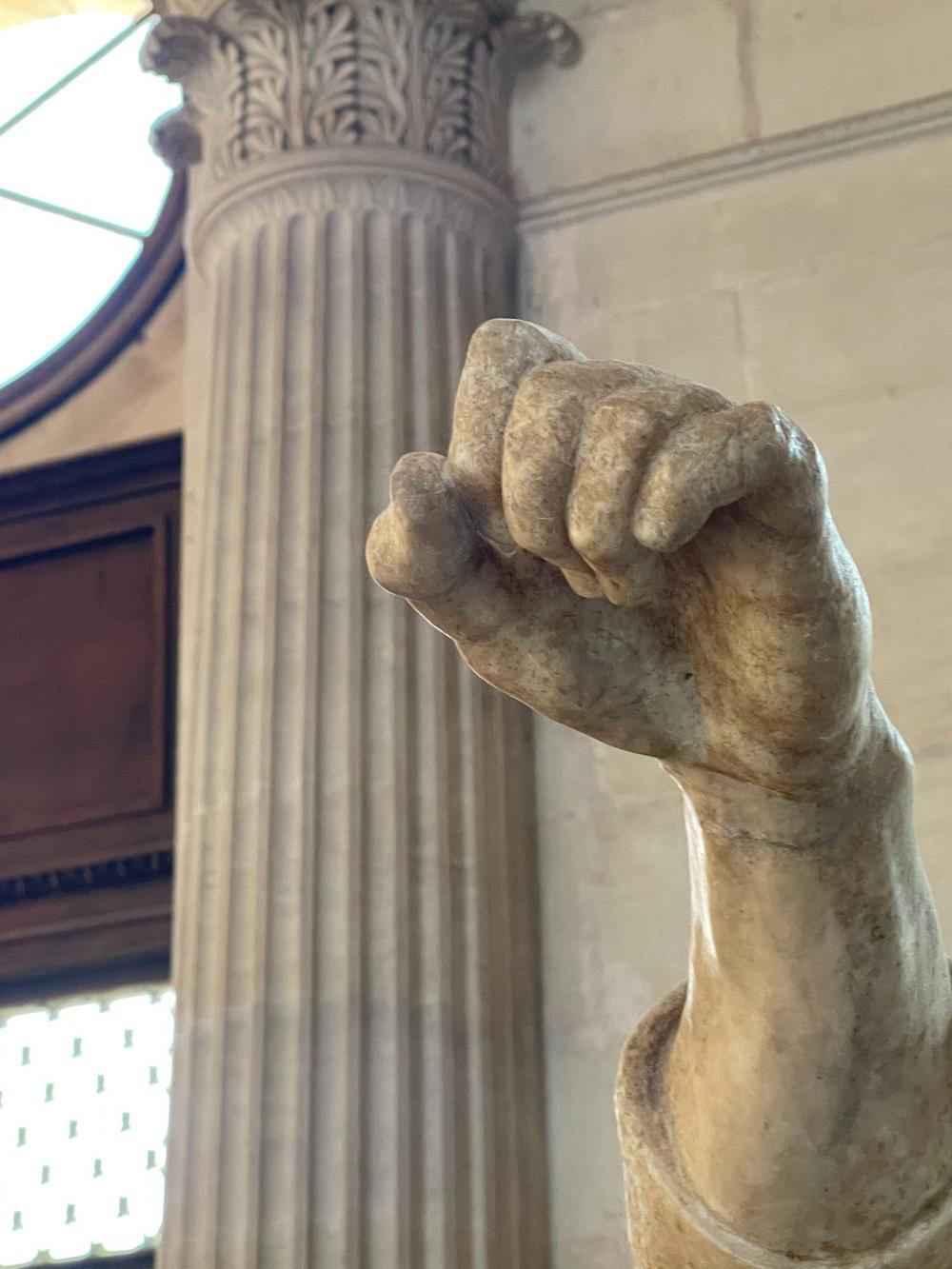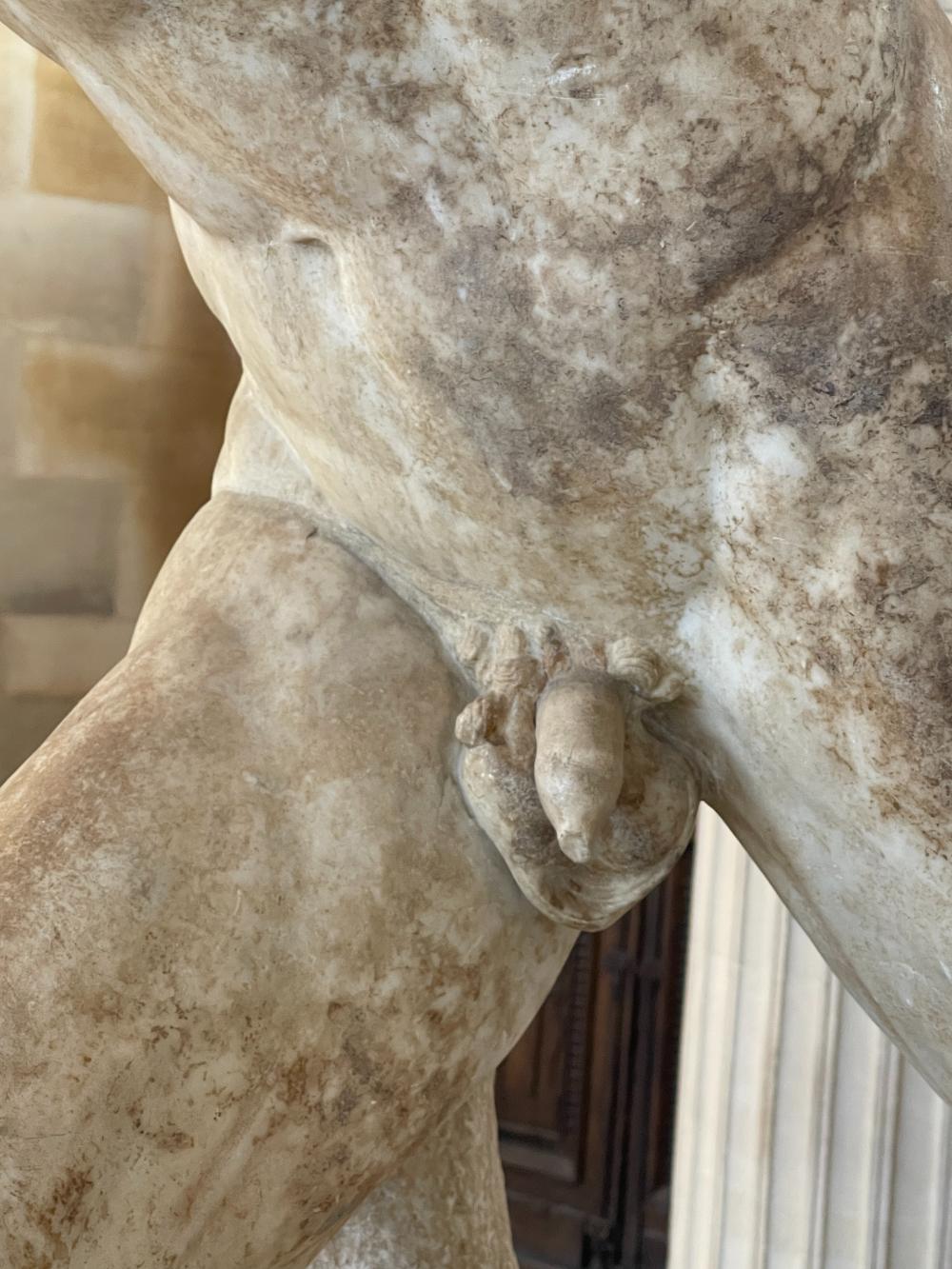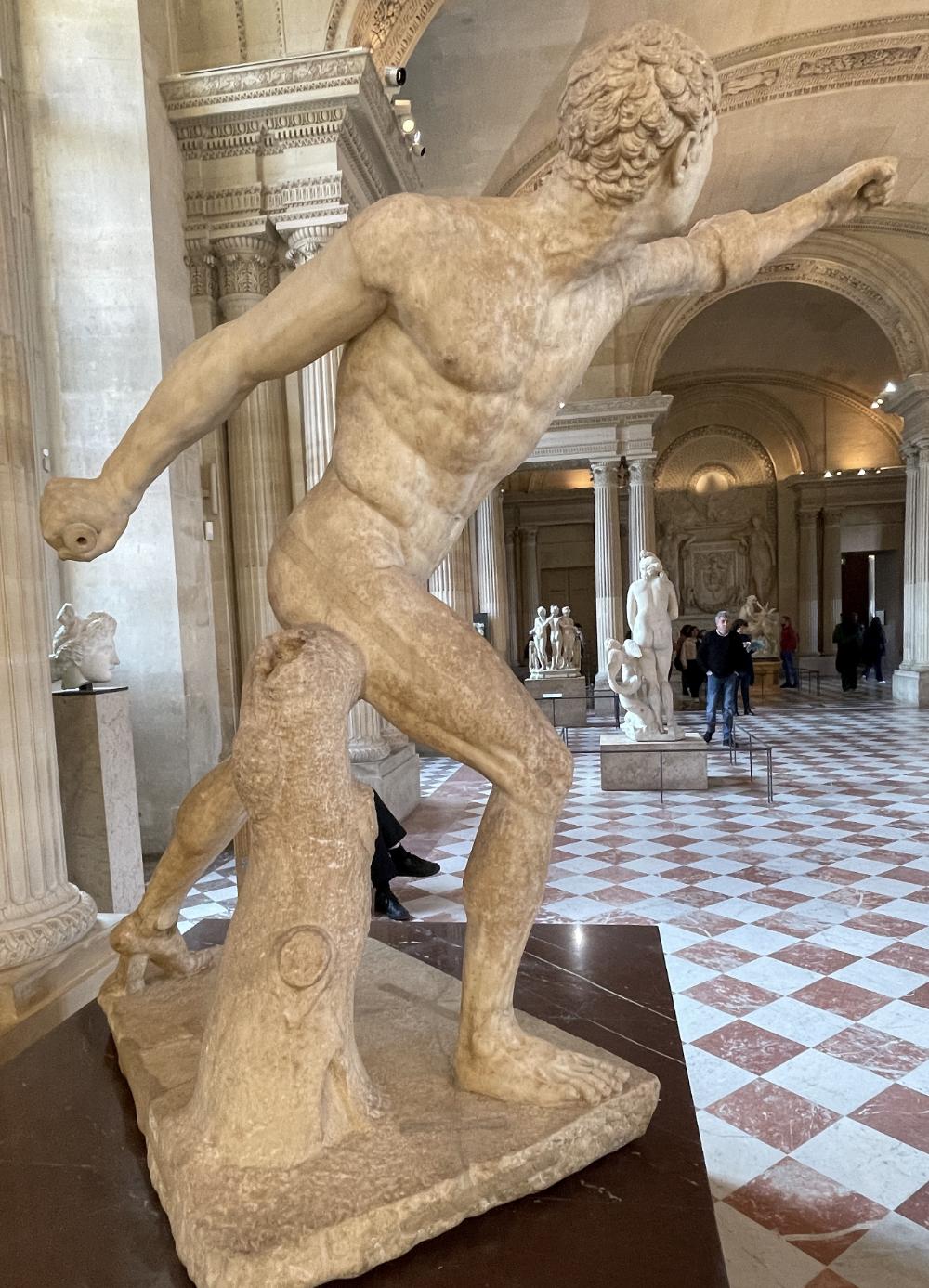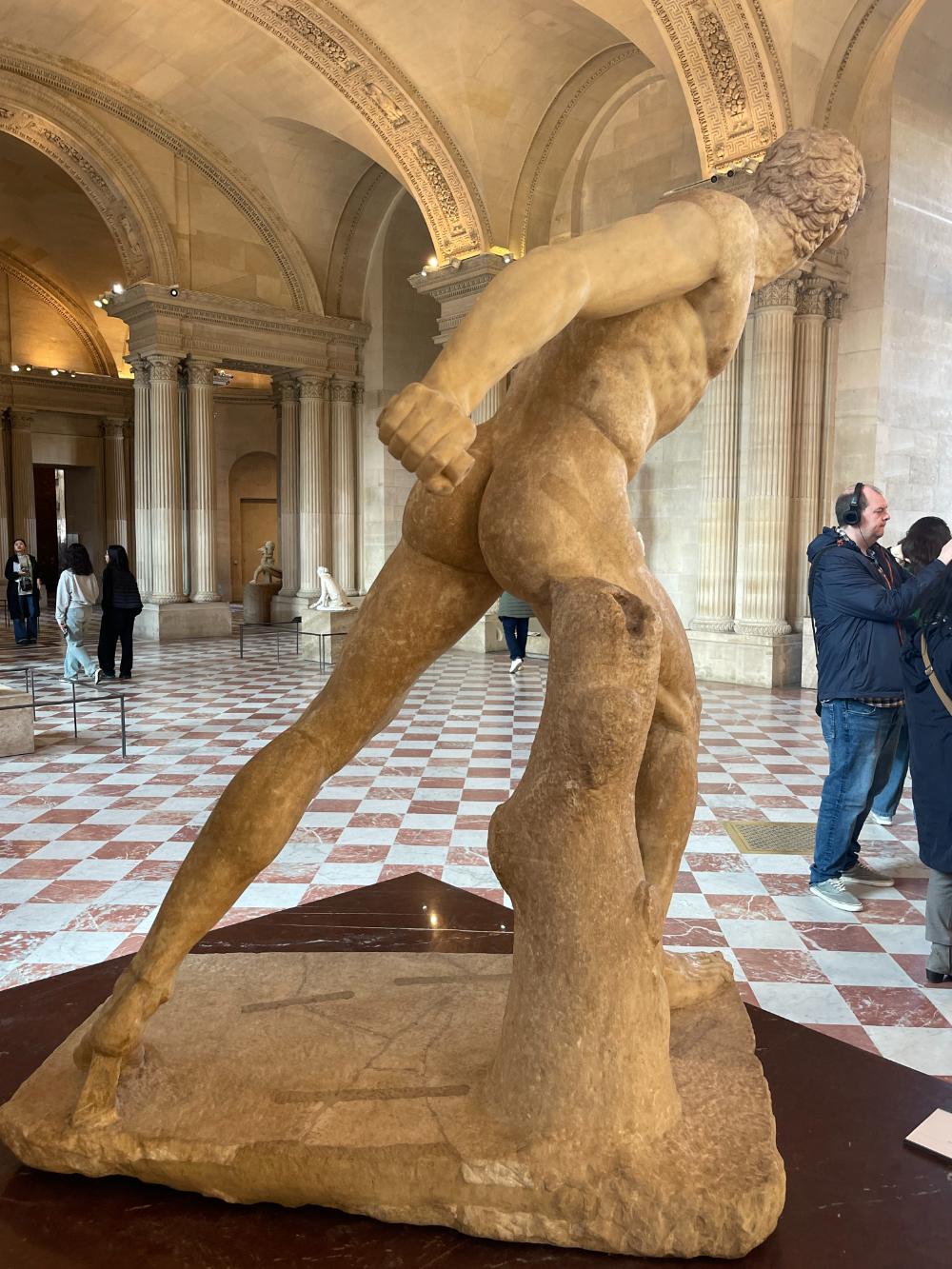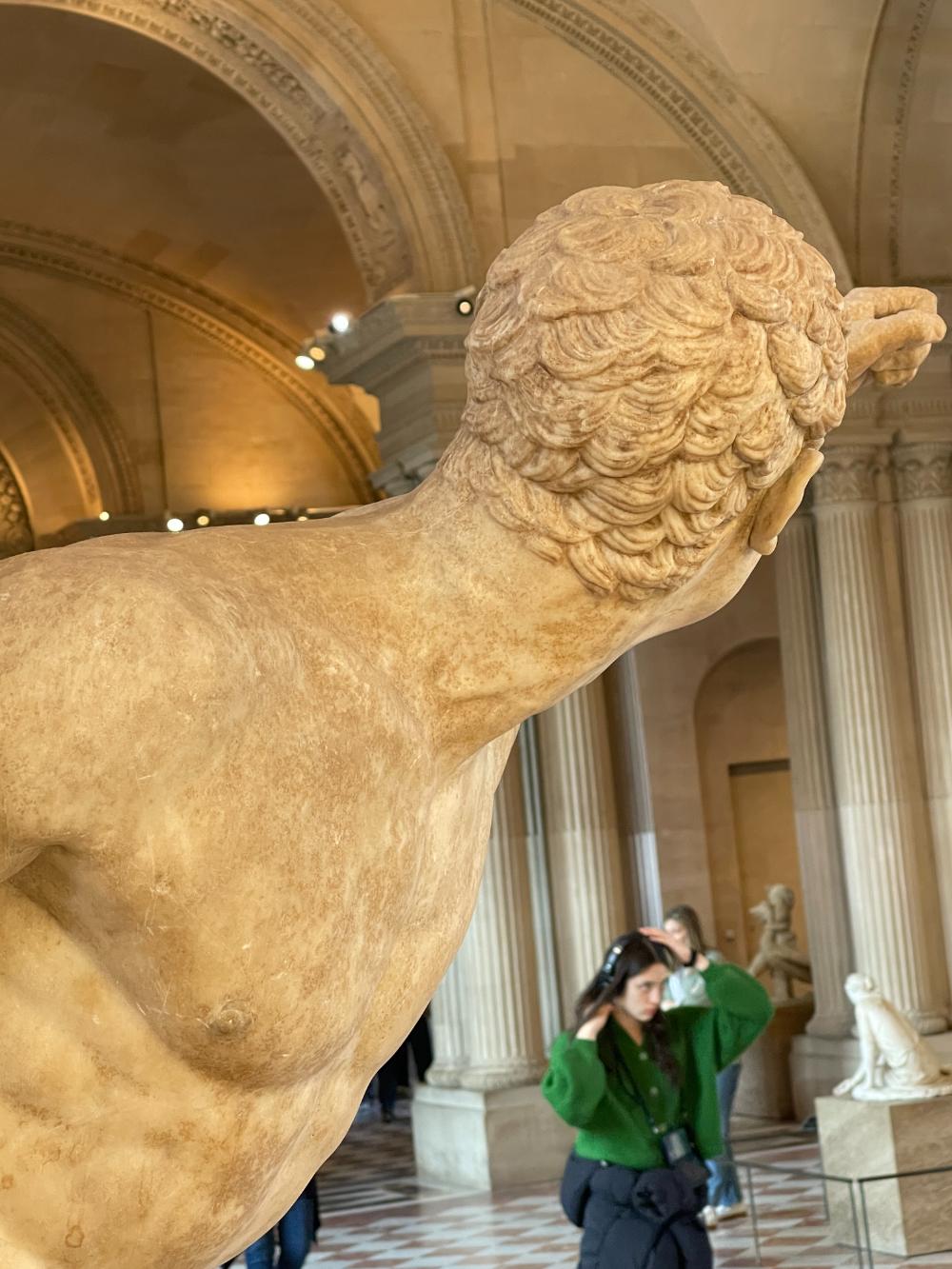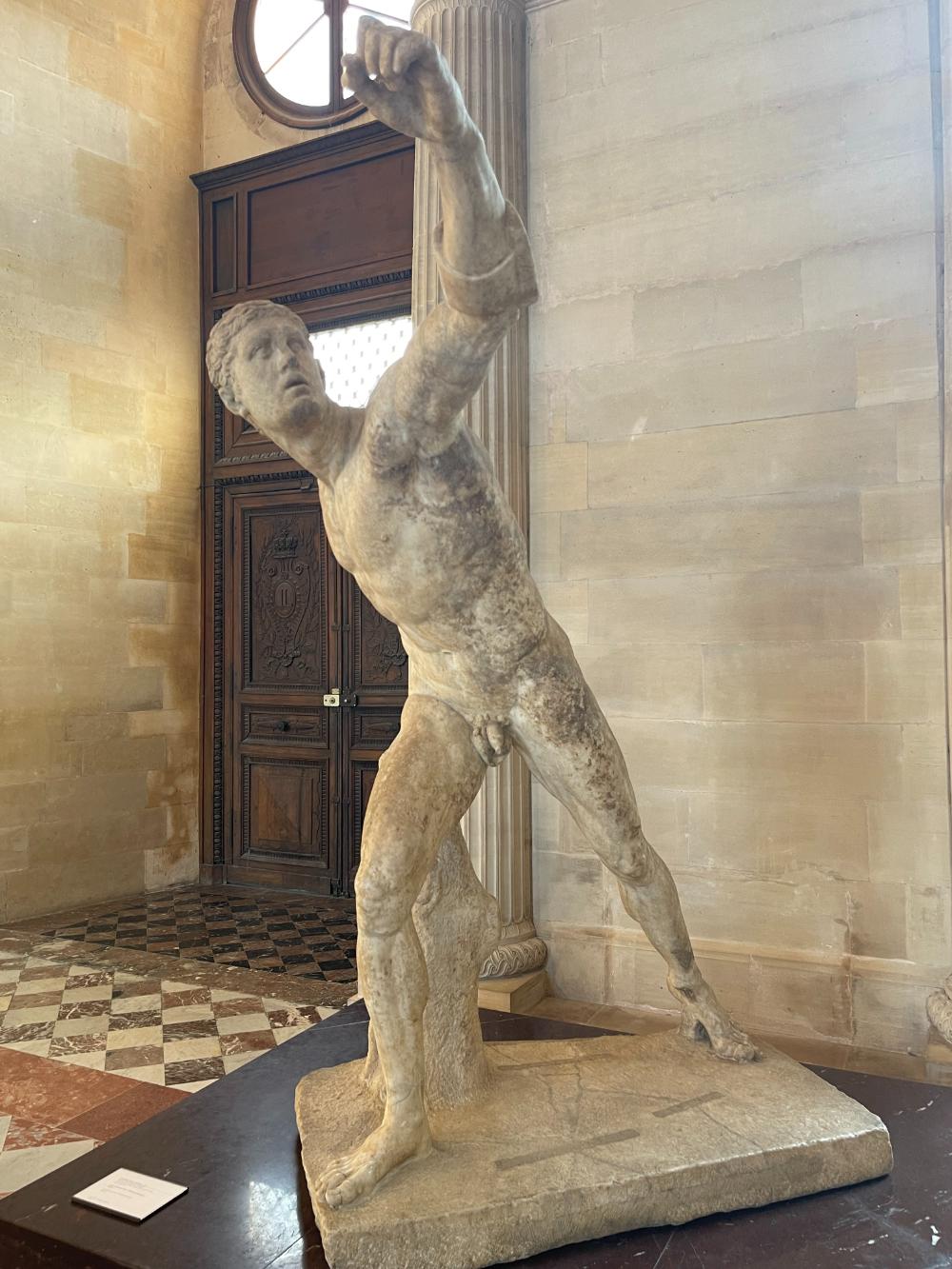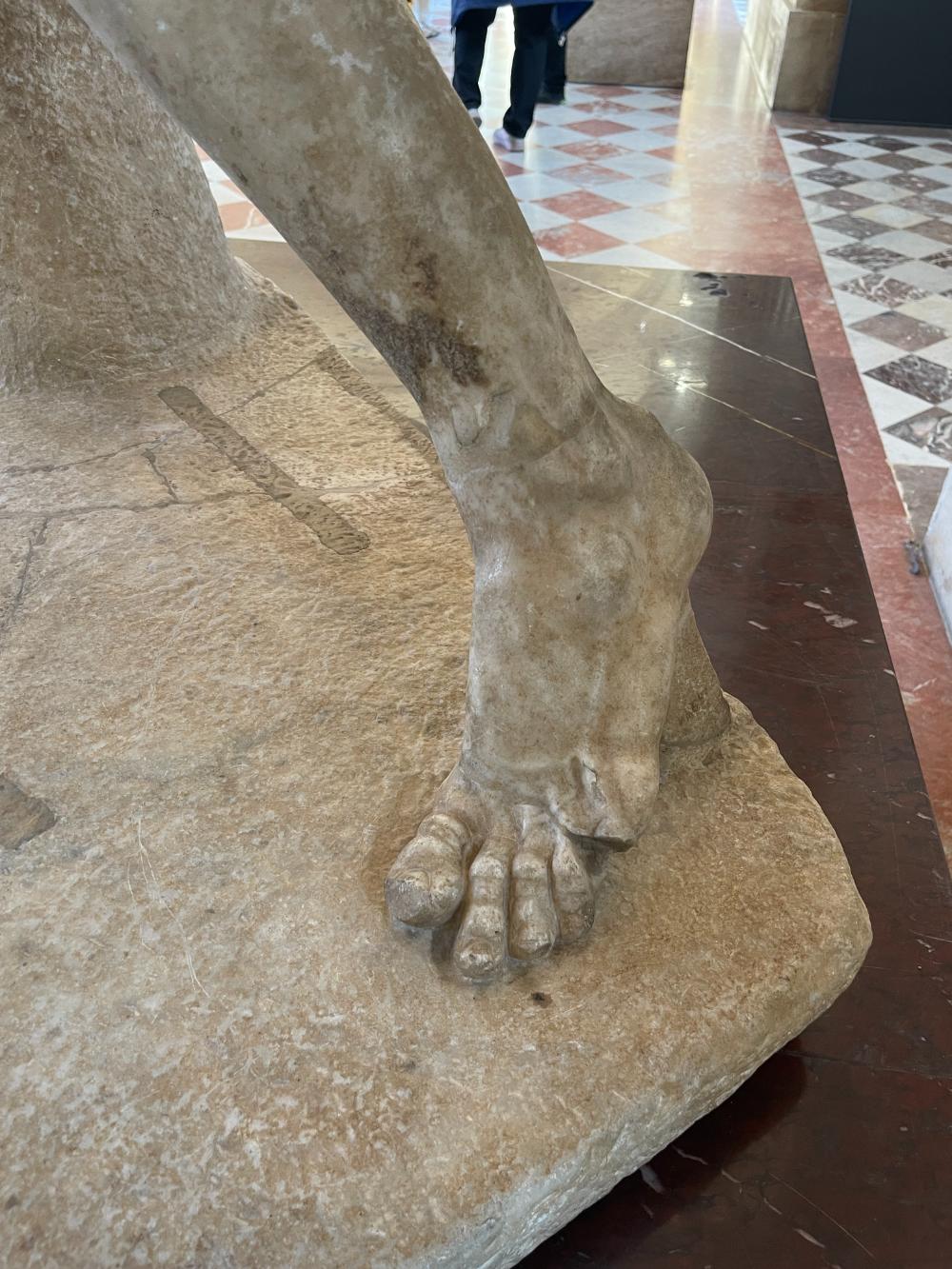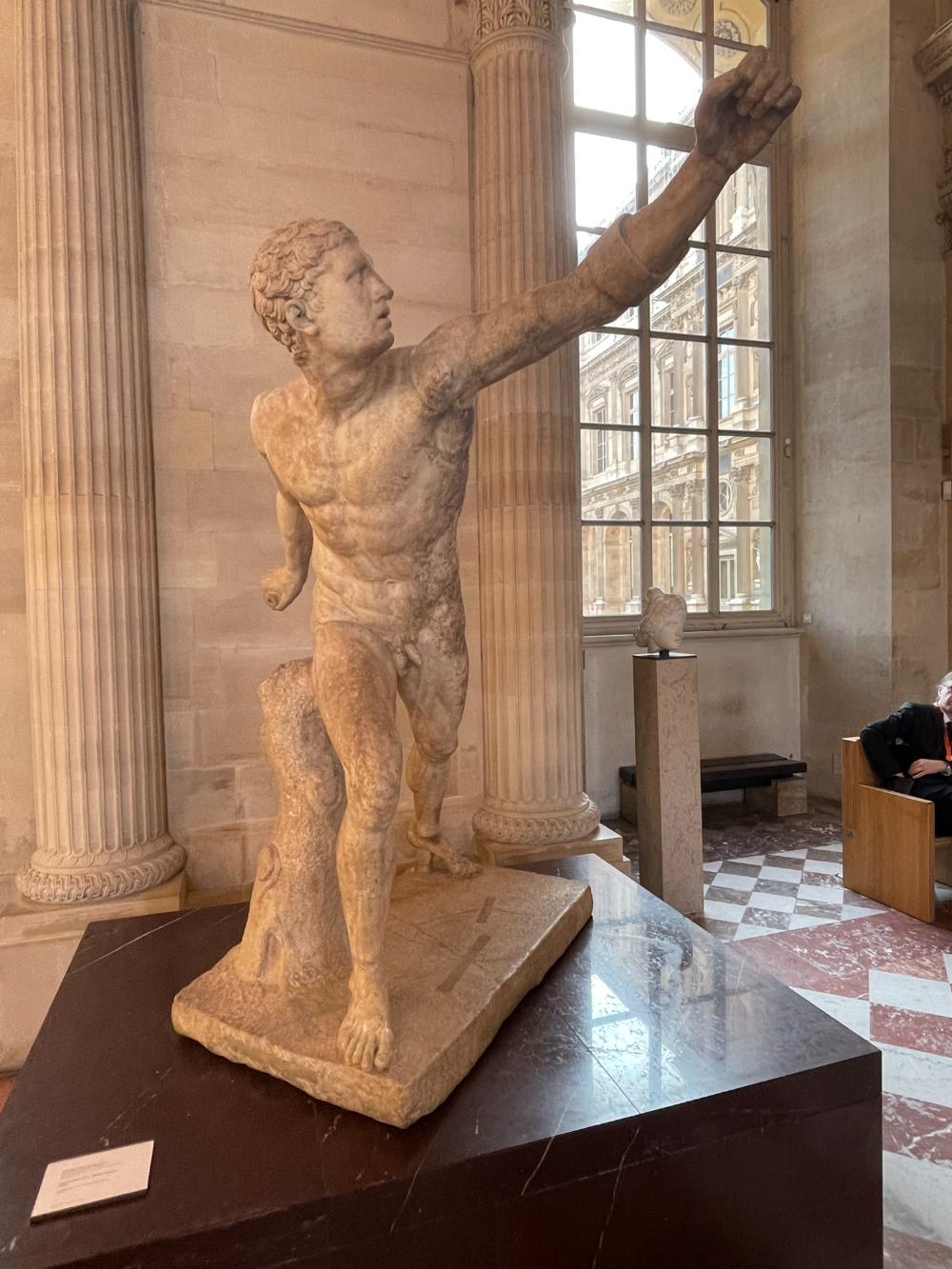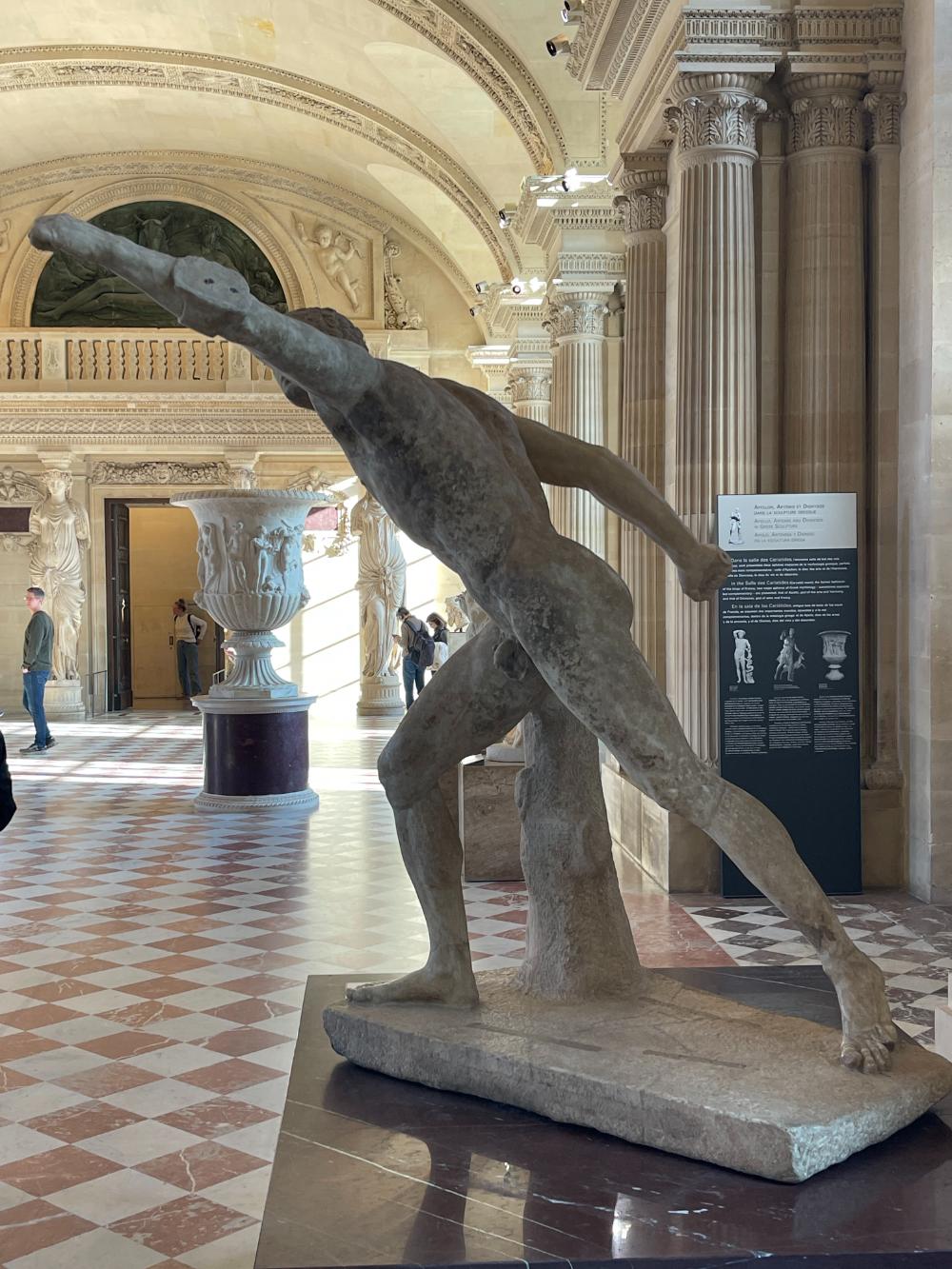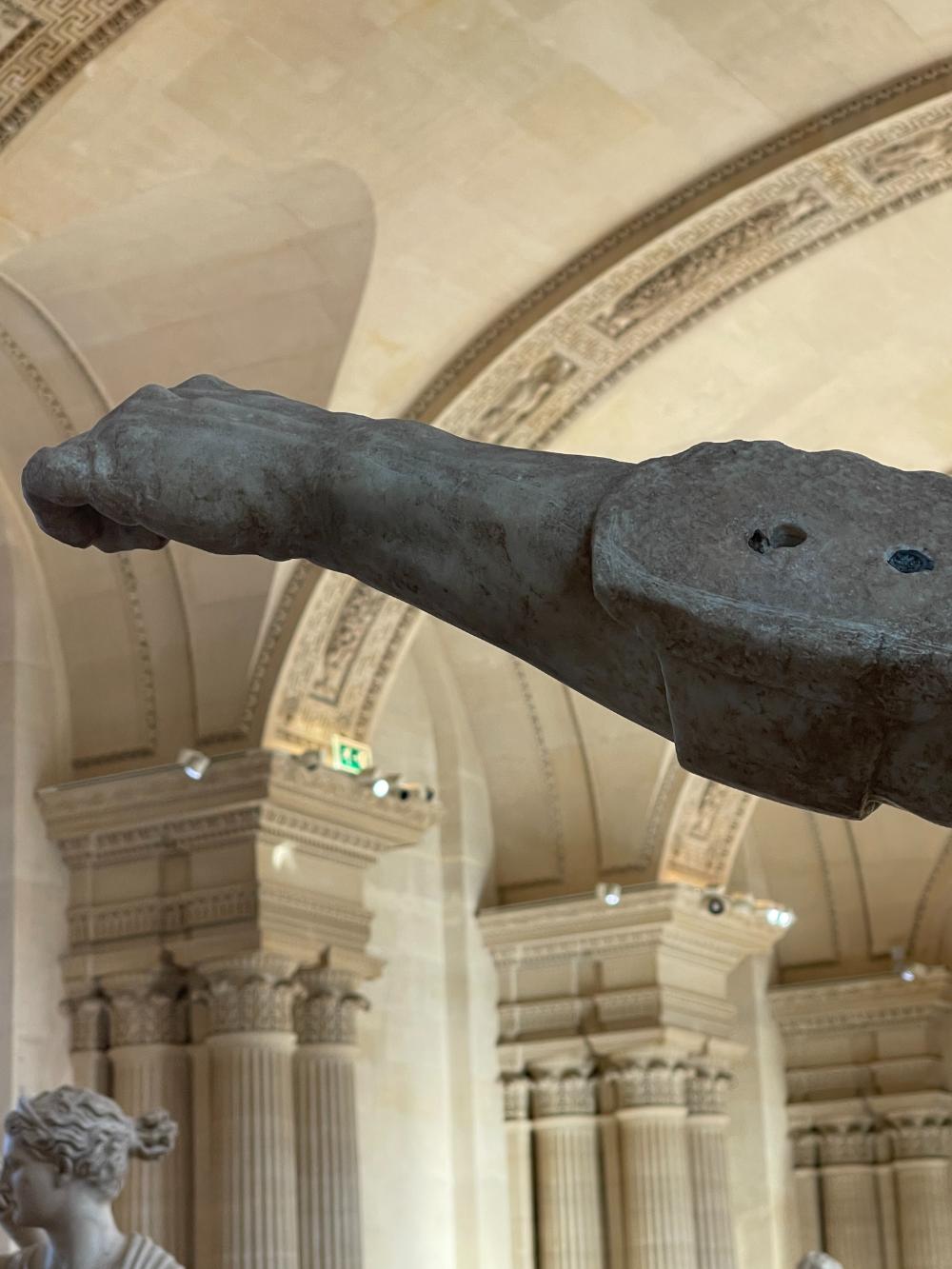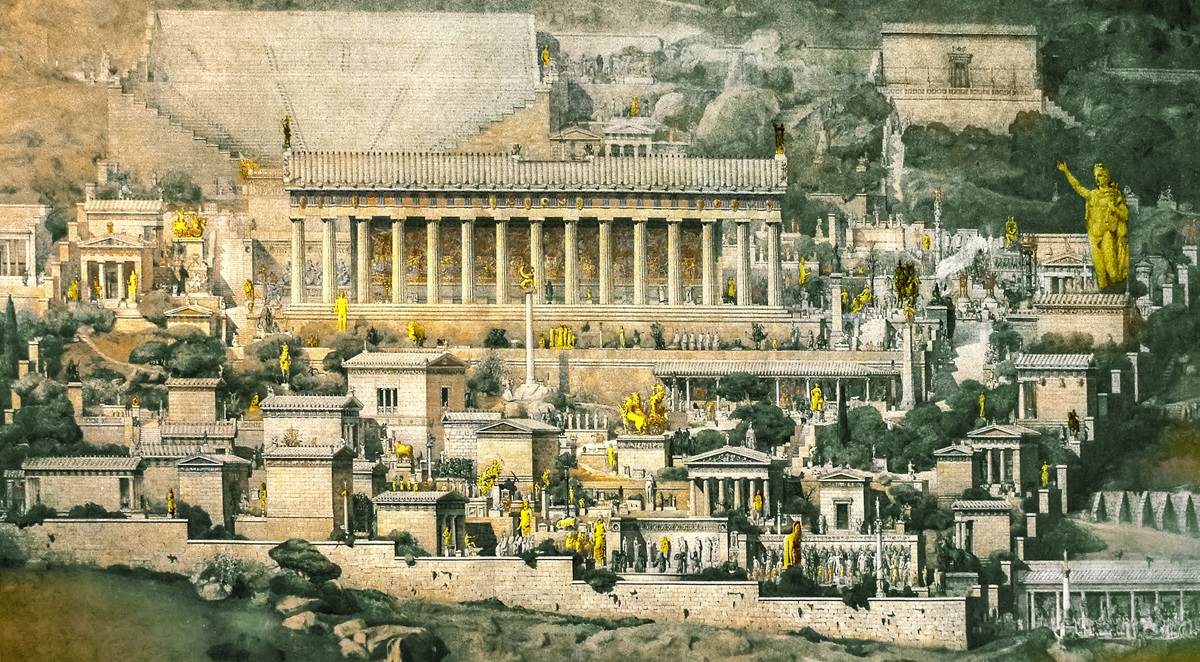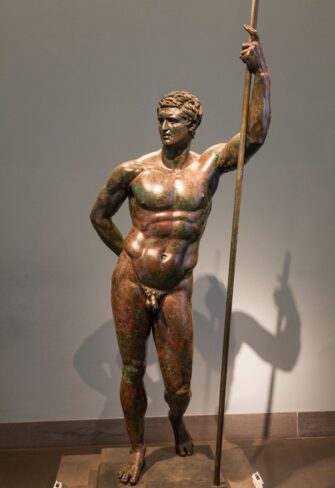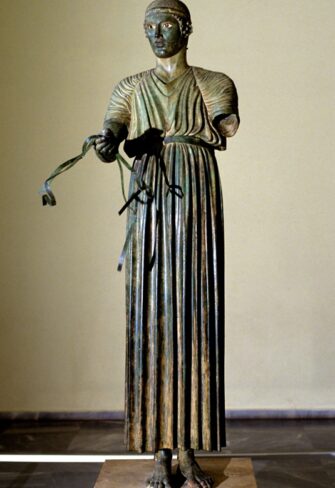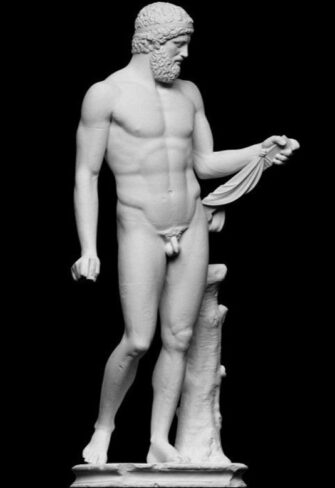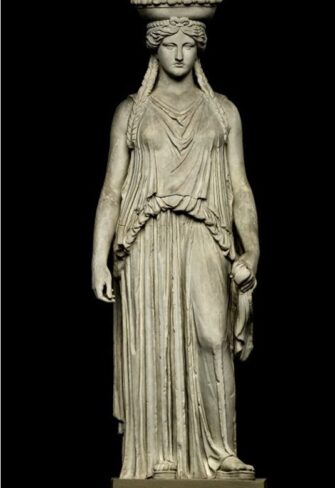All Garden Products from Classic Garden Elements
Borghese Gladiator
£164,100.00
incl. VAT plus Shipping Costs
Delivery time: 6 months. Free delivery in England, Scotland & Wales (except islands)
USA deliveryclick here
Antique Borghese fencer statue – template for the replica bronze statue
The Borghese Fencer, also known as the Borghese Gladiator, is an ancient statue of a fighting warrior that was found during excavations for Cardinal Scipione Borghese in Porto d’Anzio in the first decade of the 17th century. The life-size marble statue dates back to the 3rd century BC and was restored by Nicolas Cordier in the 17th century.
The statue was brought to the Villa Borghese in Rome in 1613, but was later sold to Napoleon by Camillo Borghese in 1807 and is now in the Louvre in Paris. Agasias from Ephesus, son of Dositheus, is named as the artist in the inscription. The statue is described as a gladiator, but is more likely to depict a swordsman.
Replicas of the Borghese fencers can be found in the Mirabell Gardens in Salzburg and in the palace gardens of Leopoldskron Palace. The statue was much admired and copied in the 18th century. There are replicas in various places, including Windsor Castle and Petworth House.
The Borghese fencer also became popular in the 19th and early 20th centuries, with casts in sizes suitable for the living room, either true to the original or with a fig leaf in front of the genitals. The statue served as a model for anatomical studies and was mentioned in literature and art, such as in Gottfried Keller’s artist’s novel “Der grüne Heinrich” and the painting “Atelierszene” by Johann Peter Hasenclever.
The copy of the statue offered in our online shop is based on a plaster cast of the original in the Louvre. It can be purchased as a bronze or marble replica.
The Borghese Fencer is most likely a Hellenistic marble version based on an older, unknown bronze original by the sculptor Lysippos from the late classical period. The presence of the tree speaks in favour of the existence of an older bronze model. The tree shows the need to reinforce a work that was originally made of bronze and therefore needed no support – and which was then transferred to marble, a much heavier material that breaks more easily.
Description
Buy Borghese fencer as a replica bronze statue in museum quality
The sculpture is produced as a bronze cast using the traditional lost wax technique. The negative mould required for this is based on a plaster cast of the original in the Louvre.
Cast marble & marble sculpture from the sculptor
In addition to classic bronze casting, we also offer two other moulds for the statues shown here. Marble casting from powdered genuine white marble. And the new moulding of the statue by sculptors from a single block of white marble. If you are interested in one of these moulds, please do not hesitate to contact us. We look forward to receiving your Mail or call us.
Authentic Reproductions of Ancient Bronze Statues: Classical Weathered Patina and, exclusively new and available only with us, the Original Antique Patina based on the latest 2022 Louvre research findings
We offer two exceptional patina options for bronze statues. The first is the classical patina, which beautifully captures the natural weathered appearance of bronze. Since the rediscovery of ancient life-sized bronzes, this patina has become the preferred choice and is available in up to three popular variations.
For enthusiasts seeking an authentic, antique aesthetic, we present a groundbreaking innovation: a faithfully recreated surface finish that matches precisely what the ancient audience would have admired. Thanks to the spectacular research findings published by the Louvre Museum in late 2022, we are now able to replicate the surface of ancient life-sized bronzes with remarkable accuracy. The multi-year study of the Charioteer of Delphi, conducted using cutting-edge technology, revealed that the statue, aside from minor details such as the eyes, headband, and belt, once displayed a high-gloss, golden sheen reminiscent of subtly shimmering gold leaf. It is therefore highly likely that renowned ancient sites, such as Delphi, Olympia, and Delos, presented themselves to ancient visitors with bronze statues gleaming in golden splendour.
This effect was achieved through the use of bronze with a 10% tin content. Armed with this scientifically substantiated knowledge, we can now offer an authentically recreated, antique surface for our reproductions of ancient life-sized bronzes – a level of precision that was unattainable prior to these 2022 research advancements.
Individualisation of the statue
Each statue cast by us is engraved in the base with a serial number, date of manufacture and our company logo. The base is also engraved with your name, a lettering, the occasion of production, your own company logo or additional engraving as required.
Buying your own personal legacy – a replica bronze statue
Our life-size cast bronze replicas are therefore not only artistic replicas, but also timeless reminders that will preserve your legacy for generations to come. By engraving your name, the date and the occasion on the base, this statue becomes an everlasting symbol of your most personal life achievement, your significance in this world and your work there.
Memory cast in bronze in the radiant light of antiquity
Ancient Greek bronze statues and their masterfully crafted Roman marble replicas were the sensual and visual mirror of these two advanced civilisations for over a millennium. After their rediscovery during the Renaissance, these statues once again became world-famous and symbolised the emergence of modernity.
In keeping with the ancient traditions of Delphi and Rome, the statue made for you and with your name as the donor will forever be a reminder of your personality and achievements.
Locations for the installation of ancient statues & list of parks with ancient sculptures
In exceptionally designed gardens and parks, alongside high horticultural artistry and exceptionally beautiful design, the use of top-notch furnishings often shines. Whether it’s furniture or statues and sculptures. Now original antique statues are not or very rarely available for sale. Since their rediscovery in the Renaissance, costly replicas have such been made for castles, their parks, and concurrently for the mansions of the bourgeoisie who have attained great wealth. During this time, a canon for the placement and positioning of these artworks formed and developed into modern times. In our online shop, you’ll find an overview of particularly beautiful locations for ancient statues. Additionally, we provide you with an overview of some publicly accessible gardens and parks, each boasting an impressive collection of ancient sculptures, along with specific details on where each statue can be seen.
Product details
| Item No. | S27 |
|---|---|
| Material | Bronze cast |
| dimension (height x width x depth) | 166 cm x 131,5 cm x 152,5 |
| What you receive | Single piece, Bronze cast. The exact design details, measurements and weight as well as the structure and colour of the Bronze cast may vary. |
| Delivery | Delivered using our own van |
| Delivery Charge | Free delivery in England and Wales (except islands) and to a few EU countries. Click here for details. |
| Price incl. VAT | £164,100.00 |



